Analysis
Why Does The Market for Spanish Modern Artist Joan Miró Just Keep Growing?
There is money to be made in the Miró market.
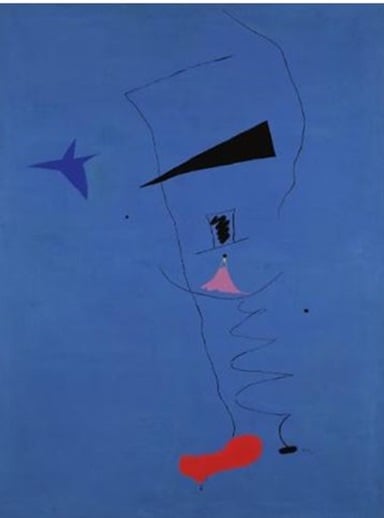
There is money to be made in the Miró market.

Eileen Kinsella

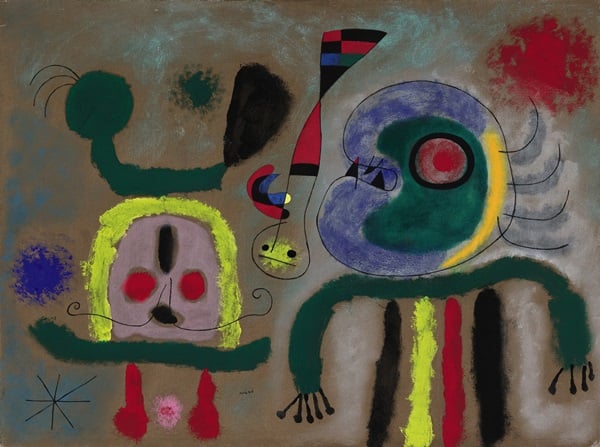
Joan Miró, L’oiseau encerclant d’or Étincelant La pensée du Poète (1951) sold for $9.8 million at Sotheby’s evening Impressionist sale on May 5 (estimate: $6–9 million).
Last week’s Impressionist and modern evening auction at Sotheby’s featured a major Joan Miró painting from the private collection of Chicago collector and philanthropist Jerome Stone. The piece, which was estimated at $6–9 million, sold for $9.8 million.
“It was a confirmation of what we already know about quality and freshness to the market,” Elizabeth Gorayeb, senior vice president in Sotheby’s Impressionist and modern department, told artnet News during a phone interview, pertaining to the loveliness of L’oiseau encerclant d’or Étincelant La pensée du Poète (1951). Gorayeb noted that the picture had been with the Stone family since they purchased it from Pierre Matisse, Miró’s dealer, in the 1950s, “It was really as fresh to the market as you can get,” Gorayeb said. “People are willing to compete very heartily for a work with those characteristics.” (see: Mysterious Asian Buyer Causes Sensation at Sotheby’s $368 Million Impressionist Sale and $179 Million Picasso Sets Stratospheric Record at Sotheby’s.)
The next day, that star lot was followed by six Miró works in Sotheby’s second set of sales, of which three were sold for a total of $727,750. Prices ranged from $35,000 for La Torture de L’Absence (1932), a brush and ink and pencil on paper, to $574,00 for a bronze sculpture Femme (1968). Christie’s is also offering half a dozen Miro works at its Impressionist and modern day sale this Friday, May 15, with estimates ranging from a low of approximately $25,000, and the highest rounding $350,000.
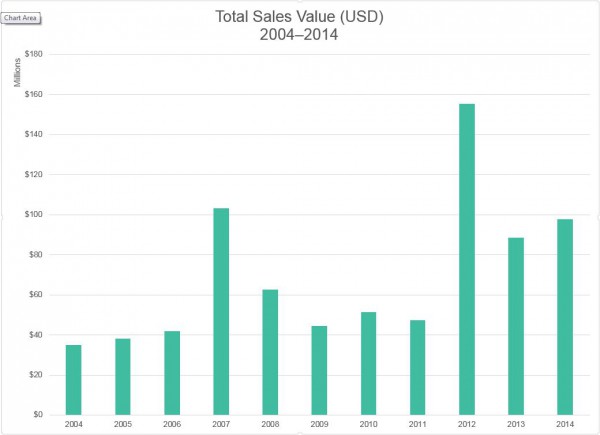
Total dollar value of auctions of Joan Miró’s work over the past decade.
Source: artnet Analytics
Given his lengthy, illustrious career, there’s been a robust market behind the Catalan painter’s work. However, the momentum quickened, along with the broader art market around 2007, which catapulted him ahead of many of his Surrealist peers. (see Sotheby’s To Offer 1947 Miró Painting Found After 50 Years In Bank Vault and Portugal Will Sell Those 85 Joan Miró Paintings After All.)
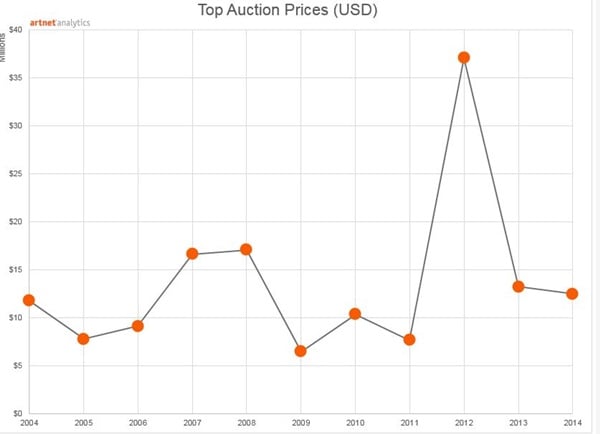
Record prices for Joan Miró at auction over the past decade. All prices are converted to US dollars and adjusted for buyer’s premium. Source: artnet Analytics.
Sotheby’s achieved the current record of $37 million (£23.6 million) in 2012, for his 1927 masterpiece, Peinture (Étoile Bleue), executed at the height of the Surrealist movement. To date, more than 17 Miró works have sold above $10 million each at auction, and 47 works have sold for more than $5 million each. Last year, more than 1,100 Miro works were sold at auction according to artnet Analytics, for a total of $97.7 million, though the total is lower than the peak achieved in 2012, of $155 million for 1,100 works at auction—the same year that the $37 million record was set.
“Miro is an artist that is increasingly in the consciousness of international collectors,” Gorayeb told artnet News in a phone interview. “He’s definitely on an upswing. He was a very selective and thoughtful painter and I think he is often times associated with Surrealism. But it isn’t fair to pigeonhole him just as a Surrealist because many of his works—particularly the ones after the second world war—are credited with inspiring Abstract Expressionism. As he developed later into the century he took on an aesthetic that really became associated with his own persona.”
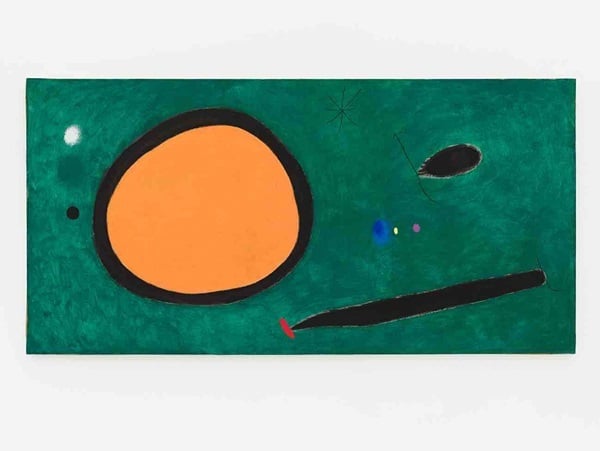
Joan Miró, Le Vol de l’oiseau par le clair de lune (The Flight of the Bird by Moonlight) (1967).
Photo: Tom Powel Imaging. Courtesy of Nahmad Contemporary, New York.
Surrealist works from the 1920s command the highest prices, and the most collector demand and interest, along with the “Constellations,” a series of small works on paper from 1940-41, which had a major impact on postwar American artists. But experts are increasingly mining the entirety of Miro’s oeuvre. On April 30, Nahmad Contemporary—a longtime champion of the artist—opened “Joan Miro: Oiseau dans L’Espace,” a solo presentation of works from the 1960s and 70s that runs through June 13 in New York.

Joan Miró, La Marche pénible guidée par l’oiseau flamboyant du désert (The Sorrowful March Guided by the Flamboyant Bird of the desert) (1968).
Photo: Tom Powel Imaging. Courtesy of Nahmad Contemporary, New York.
Gallery owner Joe Nahmad told artnet News via email the show “was inspired by my fascination with the artist’s symbiotic relationship with American art. While Miró’s early works profoundly impacted the landscape of American abstract painting, influencing Pollock, Rothko, de Kooning, Motherwell, to name a few, Miró’s late paintings were his response to the boldness of the younger Abstract Expressionists.”
Gorayeb agrees. “I think that he’s an artist that has a cross category appeal,” she told artnet News. “After the Second World War, of course, he starts working on a very large scale. That, and the aesthetics he also inspired with the Abstract Expressionists certainly appeals to contemporary collectors. So in a way one could argue that he’s commanding the prices of a really great Abstract Expressionist. He wasn’t before, but I think with those cross-associations its really increasing his value over the last several years.”
Nahmad pointed to the sale this past February at Christie’s London of Painting (Women, Moon, Birds) from 1950, that sold for $23.6 million, far higher than the $6 –10.6 million estimate. “As late Mirós come into their own, their demand is steadily increasing and the disparity between the early and late works is narrowing, similar to the trajectory of the late Picasso market,” he wrote in an email to artnet News. “Whereas early interest and appreciation came from America and then Europe, Nahmad says “in recent years, Russia, the Middle East and South America have been very active in the Miró market and we are also beginning to see a lot of interest from Southeast Asia.”
Gorayeb adds: “I think we have yet to see some really great ones available for sale.”